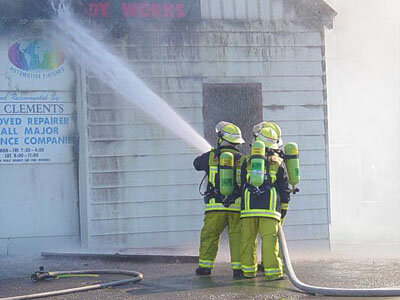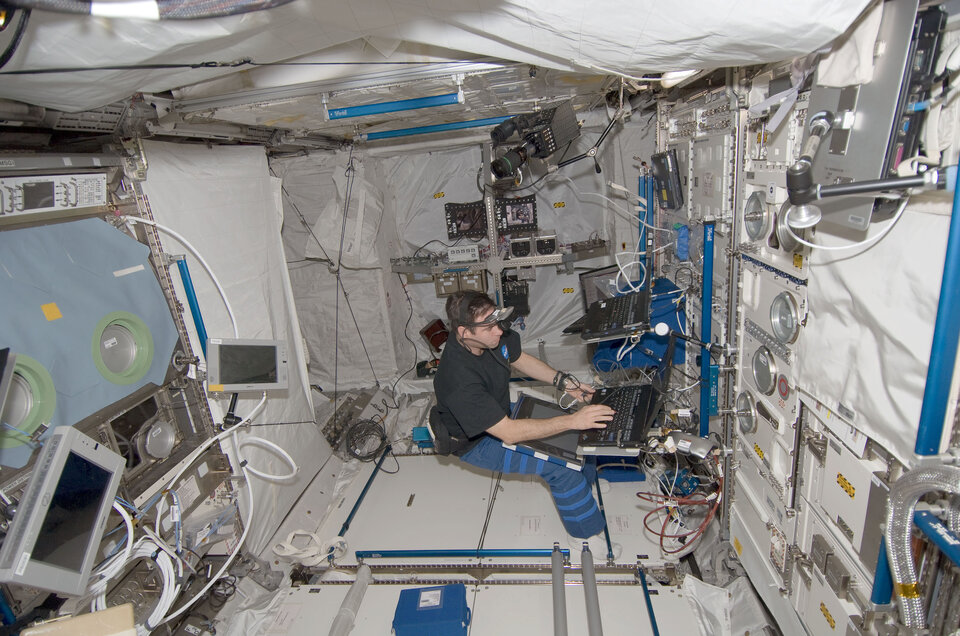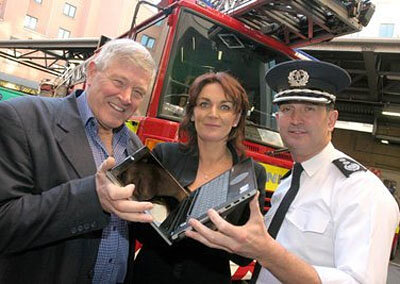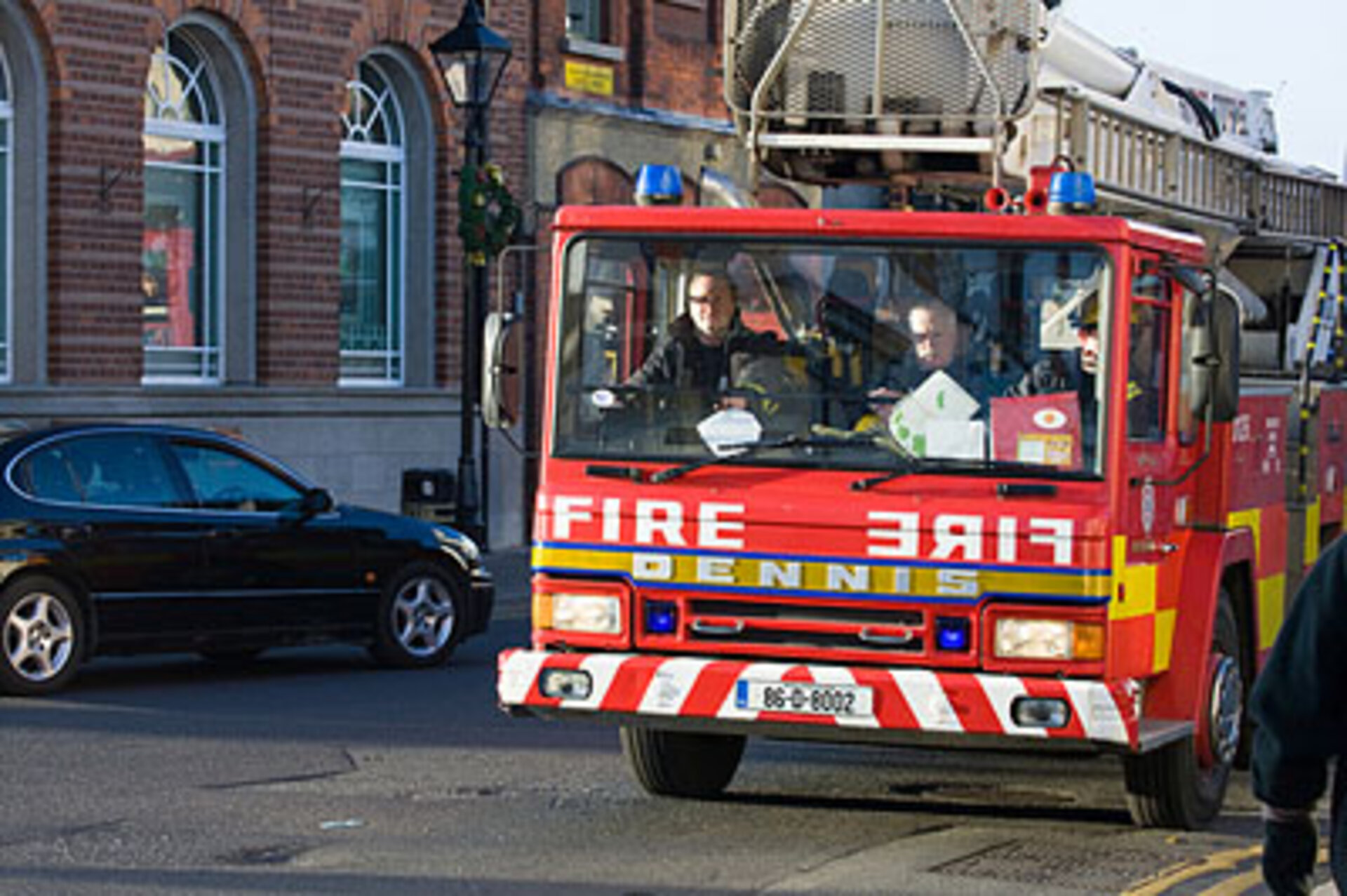How astronauts’ day-planner helps Dublin’s firefighters
The Dublin Fire Brigade is using mobile communication technology, originally developed for astronauts on the International Space Station, to get crucial information about emergency situations while en route to accident scenes. Firefighters can intervene faster, saving precious time and possibly lives.
The new system allows an emergency crew travelling to a fire to download the layout of the building, identifying where the hydrants are located and what chemicals may be inside and where.
In the case of a car crash, the crew on the way to a scene could download information about the types of vehicles involved. With explosives in airbags, high-voltage batteries, liquefied gas tanks and other new hybrid car technologies, removing an injured person from a crash scene can be extremely hazardous to both the emergency crew and the victims.
The Irish company Skytek adapted the Advanced Procedure Executor (APEX) system, originally developed to assist astronauts in managing the International Space Station (ISS), for use by the Dublin Fire Brigade.
Safety and speed are crucial in any emergency situation

“By equipping our crews with the latest technology, we can avoid delays and ensure that injured parties are getting the best possible care. This system means that our firefighters have access to key plans on their way to incidents and at the scene of accidents,” says Richard Hedderman of the Dublin Fire Brigade.
The Dublin Fire Brigade is the largest brigade in Ireland, with 850 full-time personnel at 12 stations. They run an emergency ambulance service, as well as fire, rescue and emergency call-taking for Dublin city and county, Dublin Airport, oil terminals in docklands, hospitals, chemical factories, universities and research centres.

“We plan emergency situations for dealing with major incidents in hospitals, hotels, the Dublin Port Tunnel and other such locations. Since every situation is different, ranging from fires to chemical and biological hazards, it is important that those dealing with the situation have the correct procedures and information to hand.”
“By electronically capturing the details of each accident site, we will also have access to realtime data to help build a complete picture of emergencies as they happen.”
Operated by ISS astronauts

The technology behind the APEX system is Skytek’s own International Procedural Viewer (iPV) software, development of which began eight years ago. Through a contract with Enterprise Ireland, Skytek started working with ESA, leading to the development of core technology for the operation of ESA’s Columbus laboratory. Today, the APEX system and Skytek’s iPV technology are used regularly by astronauts on the ISS.
Skytek is now in a position to transfer this space technology to other industries, a process it started in close collaboration with the Dublin Fire Brigade.

“As with many innovations, this technology was originally developed for space missions where there is a need for control, methodology and procedures that are safe and accurate,” says Dr Sarah Bourke, CEO of Skytek.
“This system has now been operational on the ISS for three years. It contains all the procedures the astronauts need, from routine things like fixing a fuse, to dealing with an emergency situation. They use a huge variety of emergency procedures as there are a lot of different experiments and exercises going on. From routine day-to-day activities to spacewalks and emergencies, there are between 2000 and 3000 different procedures that can be accessed instantly.”
System tailored to firefighters

To be used by firefighters, the system has to fulfil four requirements. Firstly, emergency crews need to be able to report online from the scene of an incident. Secondly, emergency plans for public buildings such as hospitals and schools have to be available. This enables firefighters en route to a site to download valuable information, allowing them to hit the ground running with a plan when they arrive. Thirdly, the system must have extensive information about different chemicals and how they should be handled, and lastly the database should include comprehensive information about all vehicle types and models, which is crucial in responding to a road accident.
The technology transfer adapting APEX to the Dublin Fire Brigade was partly funded by Enterprise Ireland and ESA’s General Support Technology Programme (GSTP). In addition, the Dublin Fire Brigade was involved throughout the technology transfer process, ensuring the quality and suitability of the end product.

“The equipment that is currently on trial in North Strand and Swords has been very positively received,” says Hedderman. Skytek’s near-term objective is to have the technology rolled out across Dublin’s fire stations this year and eventually installed nationwide.
“This is an excellent example of how space technology can benefit society. This technology has been rigorously tested under extreme situations for reliability. By harnessing these developments, huge leaps can be achieved in efficiency, safety and in saving lives,” says David Raitt from ESA’s Technology Transfer Programme Office.
ESA's Technology Transfer Programme Office (TTPO)
The main mission of the TTPO is to facilitate the use of space technology and space systems for non-space applications and to demonstrate the benefit of the European space programme to European citizens. The office is responsible for defining the overall approach and strategy for the transfer of space technologies including the incubation of start-up companies and their funding. For more information, please contact:
ESA’s Technology Transfer Programme Office
European Space Agency ESA
Keplerlaan 1, 2200 AG, Noordwijk ZH
The Netherlands
Phone: +31 (0) 71 565 6208
Email: ttp @ esa.int
Website: http://www.esa.int/ttp




